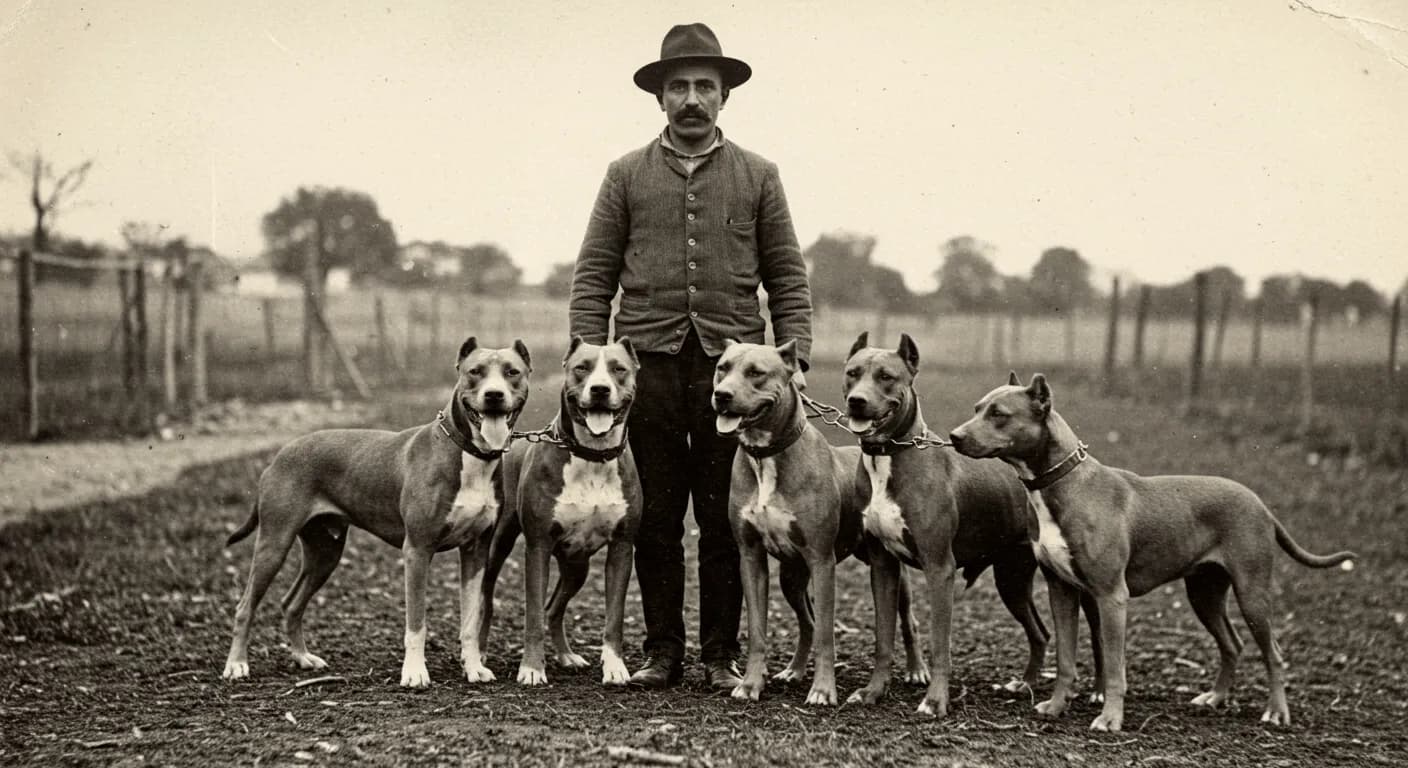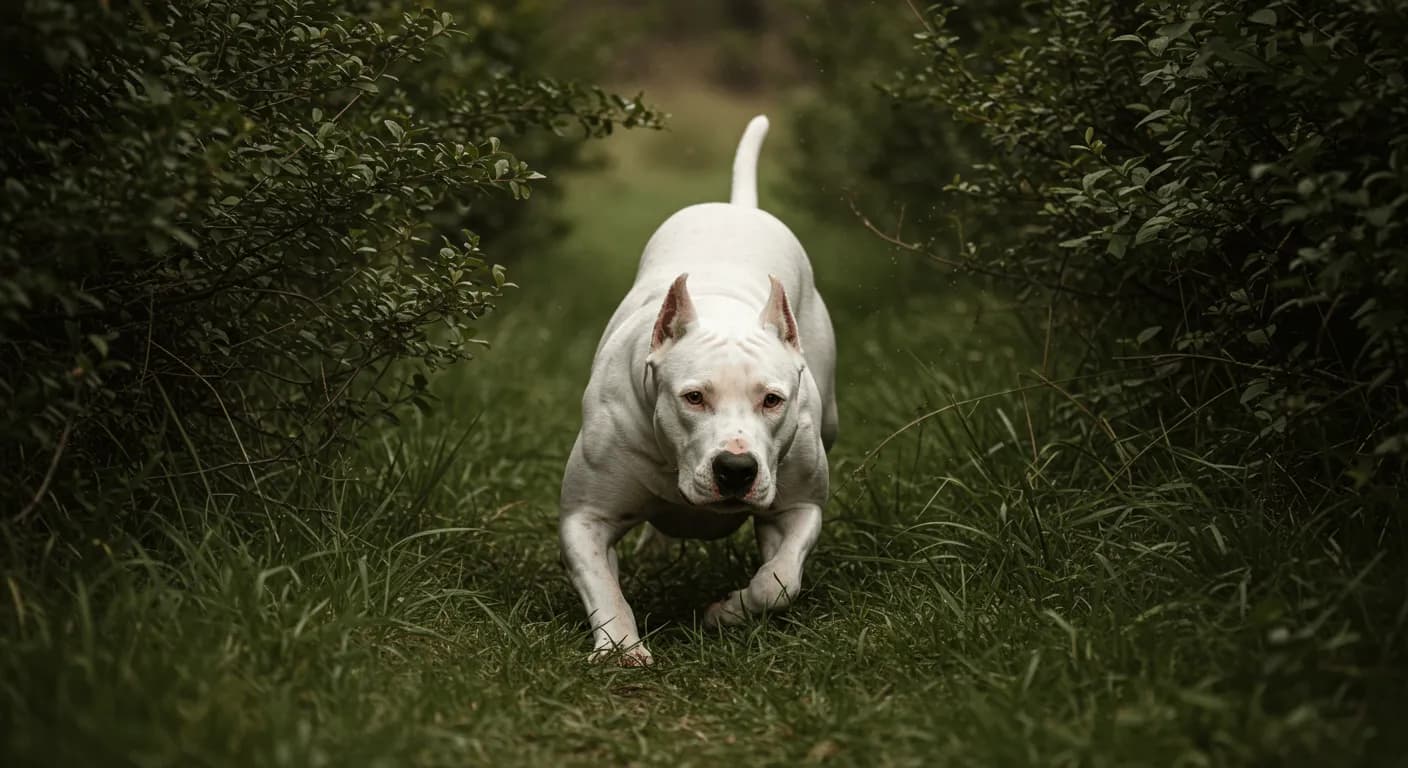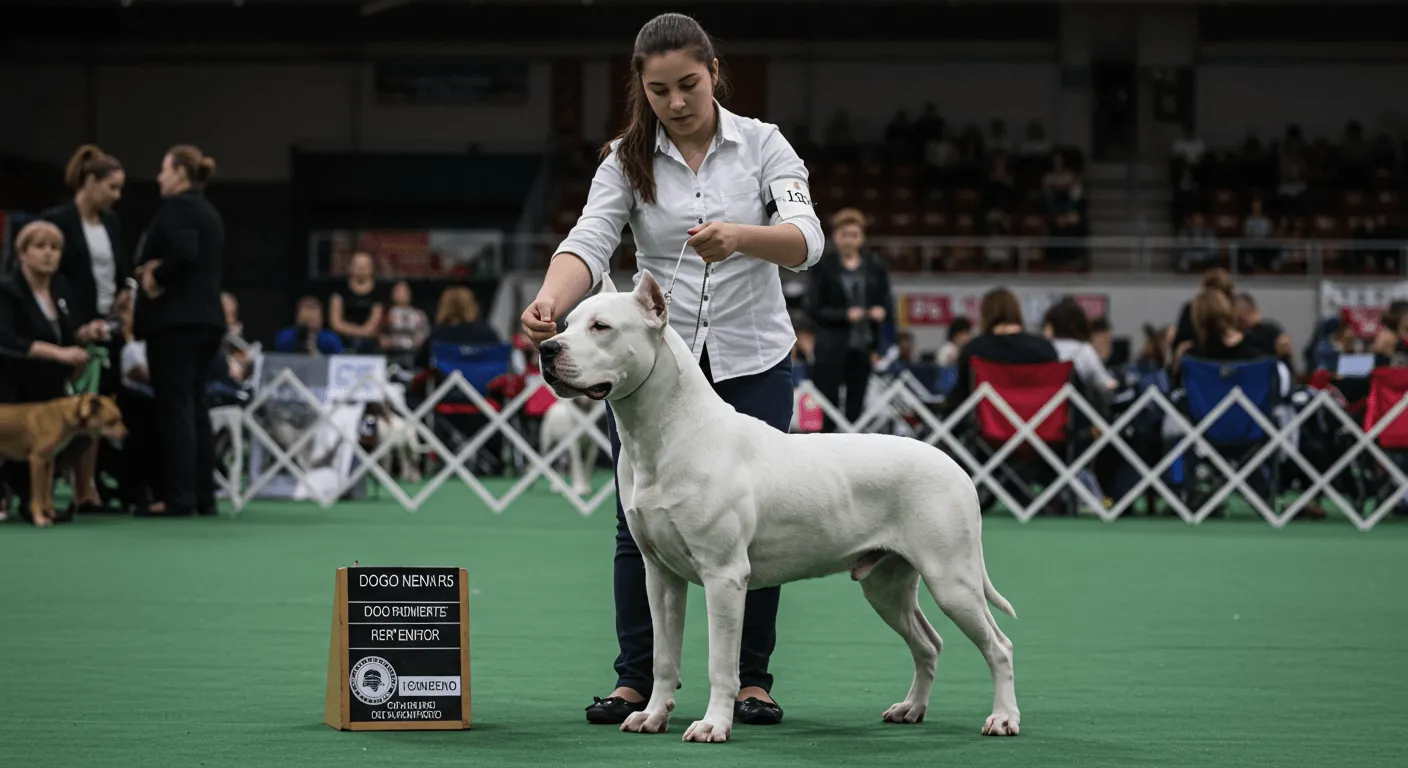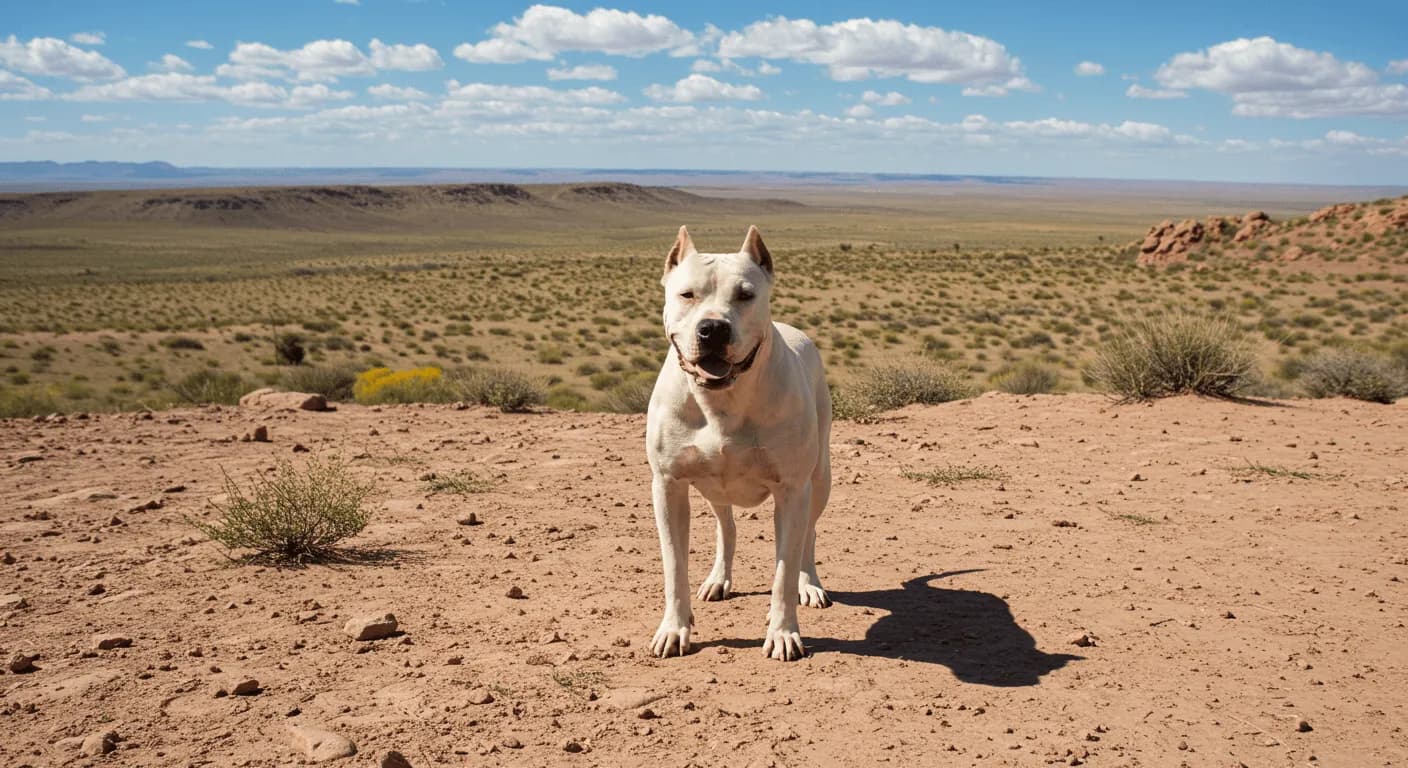The Dogo Argentino, a powerful, courageous, and athletic dog, carries with it a rich and fascinating history that traces back to South America. Designed for strength, stamina, and skill, this breed was developed with a very deliberate purpose: to be a fearless big-game hunter capable of tracking and subduing wild boar, puma, and other formidable prey in the harsh environments of Argentina. In this article, we’ll cover everything from the earliest roots of the Dogo Argentino to how it became recognized across the globe. You’ll learn about the breed’s ancestry, the historical events that shaped it, what country the Dogo Argentino came from, and what it was originally bred for—all critical elements of the broader Dogo Argentino history and origin.
The History and Origin of the Dogo Argentino
To understand the Dogo Argentino's roots, we must look back to the early 20th century in Córdoba, Argentina. It was here that Antonio Nores Martínez, a visionary breeder and medical student, began developing what he envisioned to be the ultimate big-game hunting dog. But before the Dogo Argentino emerged, its foundation breed—the now-extinct Cordoba Fighting Dog—played a critical role.
The Earliest Known Ancestors
The Cordoba Fighting Dog, a mix of several European fighting breeds like the English Bulldog and Bull Terrier, was known for its fearlessness and aggression. Though physically capable, this dog had one flaw: excessive aggression. It was more likely to fight its own pack members than hunt in coordination. For Antonio Nores Martínez and his brother Agustin, this trait needed improvement.
In the quest to create a versatile, loyal, and courageous hunter, Antonio crossed the Cordoba dog with a mix of other breeds including:
- Great Dane
- Boxer
- Spanish Mastiff
- Pointer
- Irish Wolfhound
- Bull Terrier
- Pyrenean Mastiff
- Dogue de Bordeaux
This blend created a dog that maintained the fearlessness of its progenitor while adding intelligence, agility, obedience, and hunting prowess — the foundation of the Dogo Argentino bloodlines history.

Where the Dogo Argentino Came From
The Dogo Argentino was first developed in Argentina, more specifically in the central region of Córdoba during the 1920s. The country's demanding environment—dense forests, mountainous terrain, and populous wild boar—made it essential to have a dog with endurance, strength, and cooperative hunting ability.
The Argentine Landscape and Its Influence
The environment in which the Dogo was bred influenced both its structure and character. Fighting through thick underbrush and tracking agile, aggressive prey required:
- A muscular, athletic frame
- Strong jaws and a tactical bite
- High pain tolerance
- Keen scent-tracking abilities
Argentina's tradition of horseback hunting and strong rural culture meant that hunting dogs had to be resilient and work well in packs with other dogs and hunters. This played a major role in how the Dogo Argentino was developed and refined over time.
What the Dogo Argentino Was Bred For
Initially and still today, the Dogo Argentino is primarily used for big-game hunting. Its target prey includes:
- Wild boar
- Pumas (mountain lions)
- Other large wild animals
However, beyond its original working role, the breed has seen functional evolution over time. Let's evaluate how its purpose transitioned through history:
Ordered list of key roles over time:
- 1920s–1930s: Developed as a hunting dog by Antonio Nores Martínez.
- 1940s–1950s: Used heavily in Argentina for wild boar hunts.
- 1960s: Introduced to Europe; gained recognition for its athleticism.
- 1970s–1980s: Brought to North America, adapted in law enforcement and military roles.
- 1990s–Present: Popularized in global dog shows, still used for hunting, protection, and search-and-rescue.
With this gradual transition, it has maintained its courageous spirit and functional versatility.
Naming and Nomenclature
The name “Dogo Argentino” carries cultural and linguistic significance. Here's how the Dogo Argentino got its name:
- “Dogo” is derived from the Old French word “dogue,” meaning mastiff, reflecting its large, molosser-type physical lineage.
- "Argentino" refers specifically to its country of origin—Argentina.
Hence, the name translates to "Argentine Mastiff", emphasizing both strength and provenance. The naming convention aligned with European trends of referring to molosser-type dogs in the mastiff-dogue nomenclature, giving the breed a dignified and functional title.
Genetic Lineage and the Making of the Breed
As mentioned previously, the Dogo Argentino bloodlines history is rooted in hybrid vigor. The many breeds used in its creation all offered distinct traits.
Unordered list of breeds used in developing the Dogo Argentino:
- Cordoba Fighting Dog (primary foundation breed)
- English Pointer (for scent and tracking)
- Great Dane (for height and elegance)
- Boxer (for strength and tenacity)
- Bull Terrier (for gameness and courage)
- Spanish Mastiff (for size and protective instinct)
- Dogue de Bordeaux (for jaw strength)
- Irish Wolfhound (for speed and prey drive)
- Pyrenean Mastiff (for endurance)
The result was a dog that retained almost no characteristics of a “pet” dog. The original Dogo was built for unwavering utility, with strong musculature, a broad chest, thick neck, tight coat, and a distinct white color to aid visibility during hunts.

The First Known Mentions and Breed Recognition
The first known mentions of the Dogo Argentino can be found in the early 1920s writings of Antonio Nores Martínez, who documented the breed’s development meticulously. In 1947, those efforts culminated in the official publication of its breed standard. Antonio tragically died before widespread recognition, but his brother Agustin pursued official registration.
In 1973, the breed was finally accepted by the Federación Cynologique Internationale (FCI), which brought international recognition.
Interestingly, the breed faced some controversy because of its strong prey drive and resemblance to fighting dogs. Despite this, fans and breed clubs worked hard to promote the Dogo Argentino as a noble, intelligent, and trainable breed with valuable roles in society.
When the Dogo Argentino Came to America
The breed first came to America in the mid-to-late 1970s, primarily with hunting enthusiasts. It wasn’t until the 1980s that the Dogo gained wider attention among working dog circles and specialized breeders in the United States. Eventually, organizations like the American Kennel Club (AKC) took notice, granting the Dogo Argentino full recognition in 2020.
As dog sports and breed shows increased in popularity, the Dogo Argentino's athleticism and versatility helped it hold its own among more established breeds.

Cultural Impact and Legacy
In its native Argentina, the Dogo Argentino is not just a breed—it is a national symbol. It stands as a reflection of Argentine grit, pride, and the spirit of the land itself. To this day, hunters in rural provinces rely heavily on the Dogo for boar and puma hunting. It also serves as a guardian in rural homes and farms.
Beyond Argentina, the breed’s reputation as a working dog has expanded globally:
- In Europe and North America, it’s used in police, search-and-rescue, and security operations.
- In countries like Russia and parts of Asia, it’s appreciated for both functional purposes and designer breed status.
Despite being banned in a few countries due to prejudices around its power and potential for misuse, responsible ownership and advocacy groups have fought to emphasize the Dogo’s loyalty, intelligence, and gentle nature when properly trained and socialized.
Throughout its nearly 100-year history, the Dogo Argentino continues to find new ways to be useful, admired, and respected—a testament to the foresight of the Martínez brothers. Stay tuned as we explore the breed’s influence on modern dog breeding, training, and functional longevity in our next section.## Conclusion
The Dogo Argentino stands as a remarkable example of thoughtful and purposeful canine development. From its origins in 1920s Argentina to its global recognition today, the Dogo embodies strength, loyalty, and versatility. Its legacy is deeply rooted in the vision of its creator, Antonio Nores Martínez, whose goal was to craft a breed that could not only excel in the challenging Argentine wilderness but also serve as a noble and loyal companion.
Understanding the Dogo Argentino history and origin provides invaluable insight into its behavior, needs, and abilities. Whether tracking dangerous game in rugged terrain or guarding property with fearless devotion, this breed reflects a balance of power and precision that few others can match. As more people across the world come to appreciate and understand where the Dogo Argentino came from and what it was bred for, the breed’s future continues to look strong—both as a working dog and cherished companion.
The Dogo Argentino’s journey, from a purpose-built hunter in South America to a respected breed in families and working roles worldwide, is a compelling story of human intention, adaptation, and unwavering dedication to function and form.


